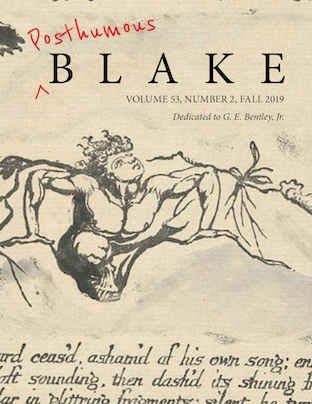Posthumous Blake: The Roles of Catherine Blake, C. H. Tatham, and Frederick Tatham in Blake’s Afterlife
DOI:
https://doi.org/10.47761/biq.245Abstract
The following essay, though long, detailed, and comprising thirteen parts, focuses on just seven basic questions: Which of Blake’s illuminated works were produced after his death? Who produced them? Where and when were they produced? How were they sold? Why do so many posthumous copies of Songs of Innocence and of Experience seem incomplete? Why did posthumous production stop? Answering these questions requires examining closely and thoroughly the bibliographical evidence provided by posthumous prints as well as new biographical facts about Catherine Blake, Charles Heathcote Tatham, and his son Frederick Tatham. It also requires tracing the probable location and movement between 1827 and 1832 of the rolling press used to print Blake’s plates.




